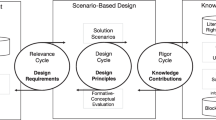Abstract
We develop smart contracts on public-permissionless blockchain to protect the music industry from the consequences of illegal downloading of copyright-protected music files. We develop a decentralized music file-sharing platform, where music file owners can upload the music files, and music file requesters can download the music files. We also establish a fair rewarding mechanism for the music industry for the benefit of music file owners, where music files can be traded through smart contracts between the music file owners and file requesters. Further, we implement a penalty scheme to avoid malicious and illegal music file resources to be added to the community network. This approach is ideal for addressing the problem of illegal distribution of copyright-protected music files without the consent of the owners, which has negative consequences in the music industry. This model considers a community of people networked together, where music file owners can upload their music files to a community network server on approval of the majority of the community and the file requesters can request a paid download from the community network. Music file uploading and downloading transactions are voted and signed by the online community members. All parties are rewarded with an incentive fee per valid transaction. Transactions are handled through self-executing smart contracts. This model further analyzes the costs incurred in music file uploading and downloading transactions based on the uploading/downloading cost, the transaction fee and the networking cost. Perceiving the significance of the smart contract in the music industry, we determine that the effect of illegal downloading of copyright-protected music files can be reduced. We also emphasize the challenges associated with the adoption of the smart contract. Since blockchain interoperability is yet an issue, migrating applications in a heterogeneous network or between platforms can be costly and tedious, which should be further explored in the future. Adapting the proposed architecture for private-permissioned blockchain (Hyperledger Fabric and Libra by Facebook, R3 Corda) and could be a natural extension of this work.






Similar content being viewed by others
References
(2019) An introduction to libra - white paper. [Online] https://libra.org/en-US/wp-content/uploads/sites/23/2019/06/LibraWhitePaper_en_US.pdf
(2019) Binance whitepaper. [Online] https://www.binance.com/en
Alphand O, Amoretti M, Claeys T, Dall’Asta S, Duda A, Ferrari G, Rousseau F, Tourancheau B, Veltri L, Zanichelli F (2018) Iotchain: A blockchain security architecture for the internet of things. In: 2018 IEEE wireless communications and networking conference (WCNC), pp 1–6
Buterin V (2014) A next-generation smart contract and decentralized application platform - ethereum white paper. [Online] https://www.ethereum.org/pdfs/EthereumWhitePaper.pdf
Coelho I, Coelho V, Lin P, Zhang E (2019) Community yellow paper: A technical specification for neo blockchain. https://neoresearch.io/assets/yellowpaper/yellow_paper.pdf
Dean J, Ghemawat S (2017) Mapreduce: Simplified data processing on large clusters, USENIX Association, Tech Rep
EOS (2017) IO technical white paper. https://eos.io/
Ekanayake OA, Halgamuge MN (2021) Lightweight blockchain framework using enhanced master-slave blockchain paradigm: Fair rewarding mechanism using reward accuracy model. Inf Process Manag 3:102523
Gu K, Wang L, Jia W (2019) Autonomous resource request transaction framework based on blockchain in social network. IEEE Access 7:43666–43678
Halgamuge MN, Hettikankanamge SC, Mohammad SC (2020) Trust model to minimize the influence of malicious attacks in sharding based blockchain networks. In: IEEE international conference on artificial intelligence and knowledge engineering, California USA, pp 162–167
Han D, Zhang C, Ping J, Yan Z (2020) Smart contract architecture for decentralized energy trading and management based on blockchains. Energy 199:117417
Hearn M., Brown RG (2019) Corda: A distributed ledger. https://www.corda.net/wp-content/uploads/2019/08/corda-technical-whitepaper-August-29-2019.pdf
Hoskinson C (2017) Why we are building cardano. [Online] https://whitepaper.io/coin/cardano
Hyperledger (2018) An introduction to hyperledger. [Online] https://www.hyperledger.org/wp-content/uploads/2018/07/HL_Whitepaper_IntroductiontoHyperledger.pdf, Linux Foundation, Hyperledger White Paper
Khatoon A (2020) A blockchain-based smart contract system for healthcare management. Electronics 9(1):94
Lee M (2007) Minimum cost scheduling of stored video in dynamic bandwidth allocation networks. IEEE Trans Consum Electron 53(2):454–460
Levi SD, Lipton AB (2018) An introduction to smart contracts and their potential and inherent limitations. Skadden, Tech. Rep.
Lisi A, De Salve A, Mori P, Ricci L (2020) Practical application and evaluation of atomic swaps for blockchain-based recommender systems. In: 2020 the 3rd international conference on blockchain technology and applications, New York, NY, USA, pp 67–74
Lisi A, De Salve A, Mori P, Ricci L, Fabrizi S (2021) Rewarding reviews with tokens: An ethereum-based approach. Futur Gener Comput Syst 07:36–54
Liu X, Muhammad K, Lloret J, Chen YW, Yuan SM (2019) Elastic and cost-effective data carrier architecture for smart contract in blockchain. Futur Gener Comput Syst 100:590–599
Nakamoto S (2008) Bitcoin: A peer-to-peer electronic cash system (white paper). [Online] https://bitcoin.org/bitcoin.pdf
Patsonakis C, Samari K, Kiayias A, Roussopoulos M (2020) Implementing a smart contract PKI. IEEE Trans Eng Manag, pp 1–19
Poon J, Buterin V (2017) Plasma : Scalable autonomous smart contracts. [Online] https://www.plasma.io/plasma.pdf
Shrestha B, Halgamuge MN, Treiblmaier H (2020) Using blockchain for online multimedia management: characteristics of existing platforms. ch. 14. Springer, New york, pp 289–303
Teutsch J, Reitwießner C (2019) A scalable verification solution for blockchains
Ujo Music (2015) Rebuilding the music industry on the blockchain
Wang S, Li D, Zhang Y, Chen J (2019) Smart contract-based product traceability system in the supply chain scenario. IEEE Access 7:115122–115133
Wood G (2020) Polkadot: vision for a heterogeneous multi-chain framework. https://whitepaper.io/document/596/polkadot-whitepaper
Zhang Y, Kasahara S, Shen Y, Jiang X, Wan J (2019) Smart contract-based access control for the internet of things. IEEE Internet Things J 6(2):1594–1605
Zhang Z, Zhao L (2018) A design of digital rights management mechanism based on blockchain technology. In: International conference on blockchain, pp 32–46
Author information
Authors and Affiliations
Corresponding author
Additional information
Publisher’s note
Springer Nature remains neutral with regard to jurisdictional claims in published maps and institutional affiliations.
Malka N. Halgamuge is a Senior Member of IEEE
Rights and permissions
About this article
Cite this article
Halgamuge, M.N., Guruge, D. Fair rewarding mechanism in music industry using smart contracts on public-permissionless blockchain. Multimed Tools Appl 81, 1523–1544 (2022). https://doi.org/10.1007/s11042-021-11078-6
Received:
Revised:
Accepted:
Published:
Issue Date:
DOI: https://doi.org/10.1007/s11042-021-11078-6




